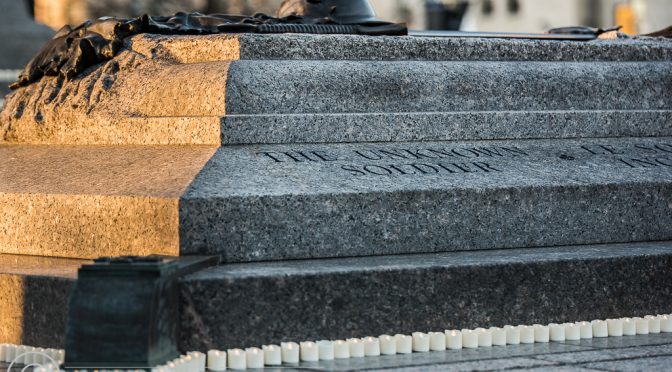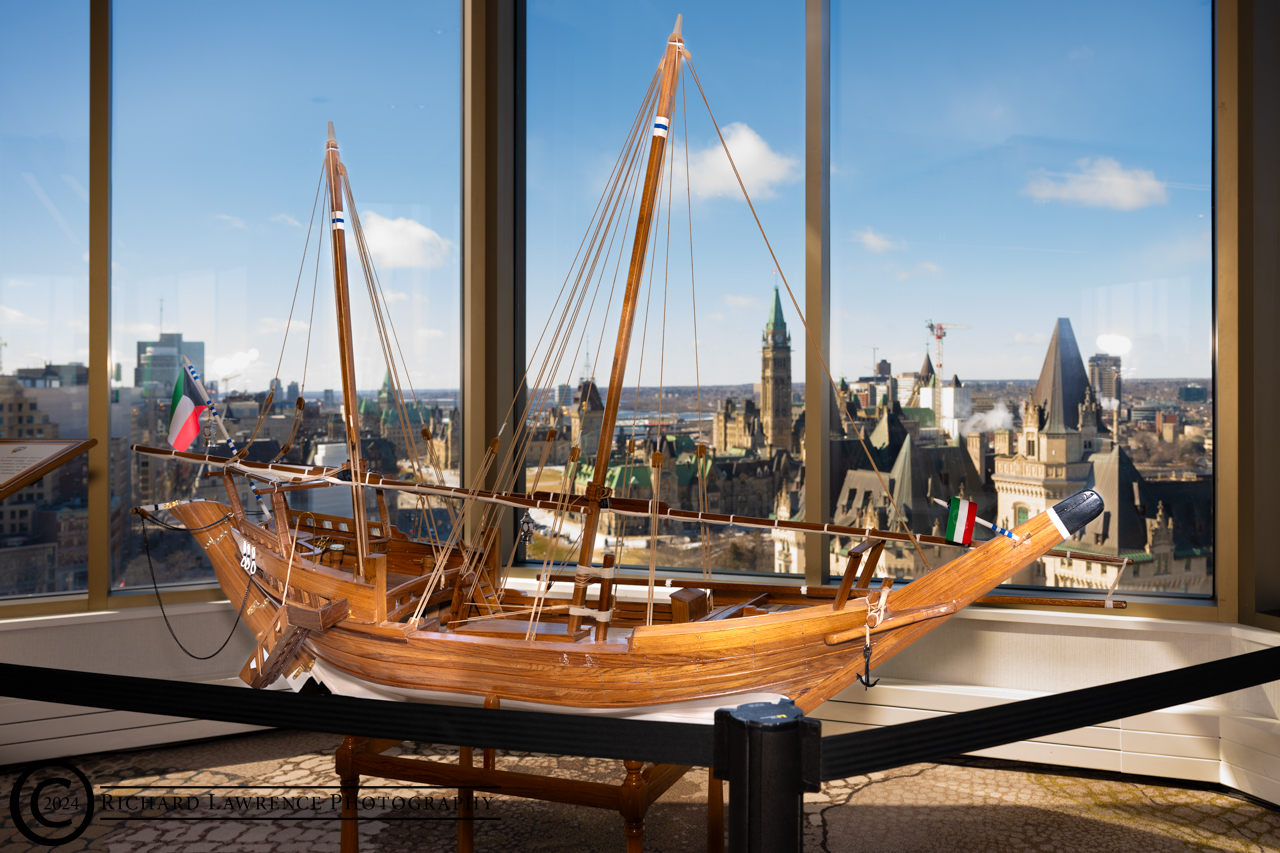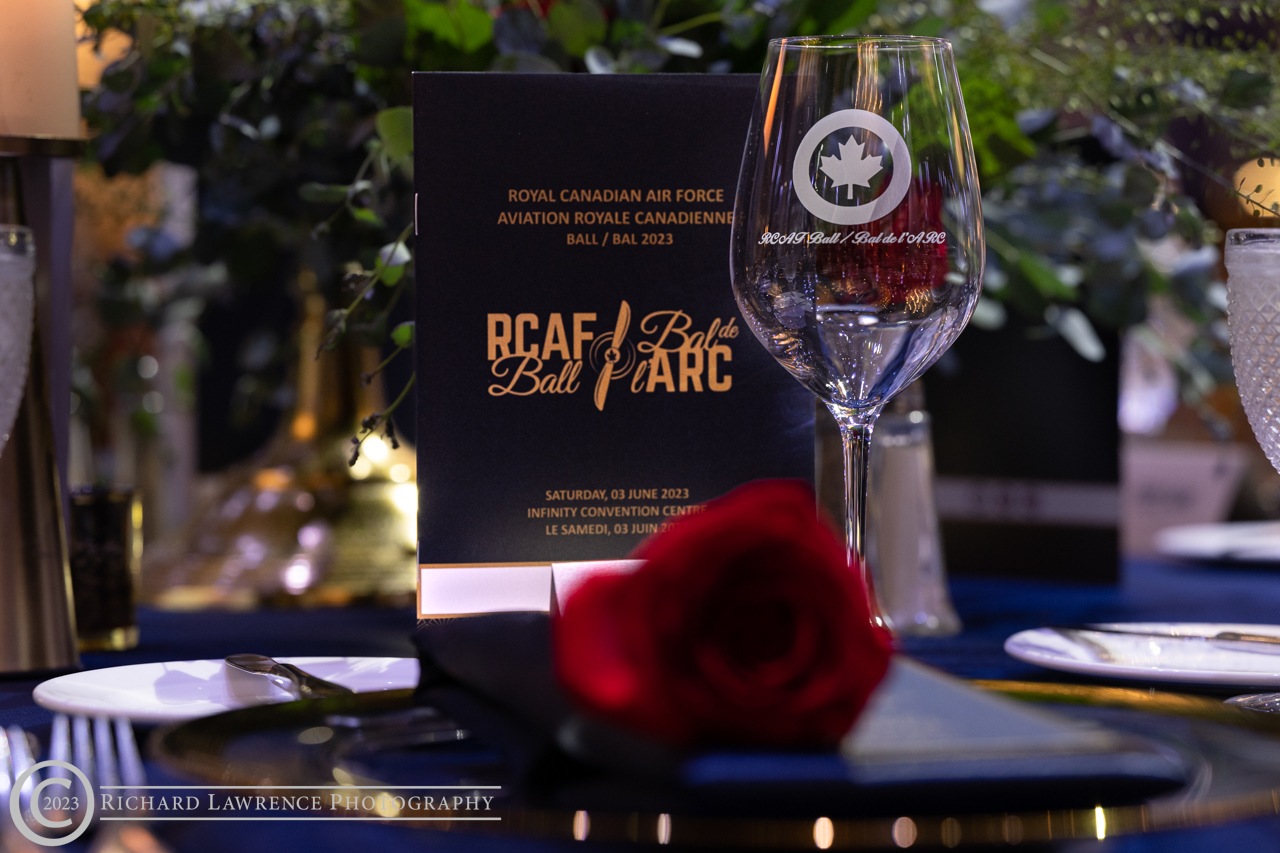At long last it has come time to commemorate a moment in Canadian history that arguably helped define the Canadian identity and make Canada more than just a British colony. Today, April 9th, 2017, is the 100th anniversary of the Battle for Vimy Ridge, a four day battle in France in World War 1 that saw 3,600 Canadians die in the struggle to take a hill that had so far eluded the allies. Much has been written on the battle but the gist of its’ importance to Canada is that Canadians fought for the first time with all four Canadian Divisions as a unit, planned the attack using innovative and new techniques, and took the objective, albeit at great cost. The commemorative ceremony in Ottawa is broken down into two components: the first on the evening of the 8th is a candlelight ceremony at the National War Memorial (NWM) followed the next morning by the remembrance ceremony.
This year the Candlelight Ceremony started at 1930 hours and was largely an affair featuring the Royal Canadian Army Cadets (RCAC) as they posted sentries around the Tomb of the Unknown Soldier, hosted veterans, and provided the Master of Ceremonies. It was started by an aboriginal song and dance which was then followed by an address by Parliamentary Secretary for Veterans Affairs, Sherry Romanado, representing the government, who spoke about the sacrifice of Canadians in the Great War.
At this point a musical interlude was provided by Christopher MacFarlane and Oliver Piggot who sang “The Vimy Ridge Song”, by Michael J. Moore. In my opinion, it was a moving song, sung with feeling and power and if you get a chance, you should search for it and give it a listen.
Dark was descending quickly at this point and it was time for the passing of the Torch of Remembrance by RCAC Chief Warrant Officer Robichaud to members of various veterans groups in turn symbolizing the passing of the torch from one generation to another. And then it was time for the candles. The public was invited to move to the NWM and place candles along the front and sides while the cadet cadre moved with precision on either side of the Memorial to start placing candles at the rear face.
As the last presentation, the public were asked to move to the front of the NWM and they were then treated to a show about the Great War and the Vimy Memorial, projected onto the NWM, with side screens to add additional information about the projections. With the last vestiges of the blue sky as background, it was quite effective.
That ended the Candlelight Ceremony for this year and the cadets now stood post at the Tomb of the Unknown Soldier until the Remembrance Ceremony the next morning.
The next morning at 0830, the Remembrance Ceremony started under a blue sky and brilliant sun with cool (not cold) temperatures and more closely followed the format of most ceremonies of this type. Bands marched on as did troops to stand on the esplanade of the NWM while invited guests were up by the Tomb of the Unknown Soldier. Cadets and other dignitaries were seated on chairs on both sides of the esplanade on the sidewalk along Elgin Street, some way back from the official ceremony.
It started with the posting of the sentries around the Tomb which are the first sentries of the season and will remain posted until November 11th. Once the sentries were in place there was a native smudging ceremony which allowed a cleansing smoke bath to purify the area. Catherine McKenna, Minister of Environment and Climate Change, then addressed the audience, and was followed by native drumming by Dave Hookimaw. Once the drumming was finished, Sierra Noble, a violinist born in Ottawa and raised in Winnipeg, came forward to play an original work called, “Warrior’s Lament”. She presented a unique sight for one of these events as she stood in a flowing white dress, face bathed in sunshine, in front of the Tomb of the Unknown Soldier and played with skill and emotion.
From this point, the ceremony pretty much followed the standard format until the end where cages of white pigeons were released into the sky where they gathered and circled a couple of times before they headed off back home.
If one is wondering why there was no significant presence by the military or politicians one needs to remember that Canada has the Vimy Memorial in France, on ground ceded to Canada for all time, that also hosted ceremonies this day. The Governor-General, Prime Minister, Minister of Veterans Affairs and Chief of the Defence Staff were all at that ceremony representing Canada.
to see all the pictures from the two ceremonies, CLICK HERE.
==================================================


































